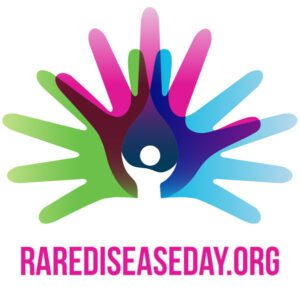Rare Disease Day is an annual observance day focused on raising awareness about rare diseases and their impact on the lives of patients, caregivers, healthcare, and public policy. Those diseases affecting less than 200,000 Americans at any given time are considered rare. Approximately 80% of rare diseases have genetic origins and 50% affect children.
At Independence Plus Inc., we specialize in treating the most medically complex, ventilator-dependent patients in their homes to help them reach their full potential. Our highly skilled nurses care for patients varying in age and disease process and witness, first-hand, the impact rare diseases have on patients and families. Neuromuscular diseases, in particular, affect many of our patients. This group of diseases impact voluntary muscle functions due to impairment that can be related to the actual structure of your muscle or miscommunication between your voluntary muscles and spinal cord via nerves. This results in loss of muscle mass, progressive weakness, and wasting of the skeletal muscles that control movement. The following are a few of the rare neuromuscular diseases we provide optimum care for:
Charcot-Marie-Tooth (CMT) disease
Charcot-Marie-Tooth (CMT) is a hereditary peripheral neuropathy that affects the motor and sensory nerves. Affecting roughly 150,000 people in the US, this rare disease is caused by deficiencies in a protein producing gene that aids in function and structure of myelin sheath and axon nerves. This deficiency alters the conduction and communication of electrical impulses between nerves, resulting in a slow progression of muscle weakness and atrophy in the arms, hands, legs, and feet. A reduced ability to feel heat, cold, and pain is seen in some patients due to the degeneration of sensory nerves. Its onset is usually between adolescence and early adulthood. Symptoms usually include hammertoes, high arches, foot drop, and sensory loss. The first signs are usually gait disturbances and high foot arches. Pain ranges from mild to severe. The disease does not limit one’s life span. CMT can be diagnosed using nerve conduction studies, electromyography (EMG), nerve biopsies, and genetic testing. It is incurable and requires interdisciplinary treatment. Respiratory muscle weakness is a rare, life-threatening symptom, making mechanical ventilation imperative to sustain life.
Severe Congenital (Neonatal) Nemaline Rod Myopathy
Nemaline Myopathy is a genetic disorder caused by mutations in genes that facilitate protein development utilized for skeletal muscle structure and function, specifically contracture and tone. Occurring in an estimated 1 in 50,000 individuals, the mutation causes ineffective muscle contraction resulting in decreased muscle tone (hypotonia), reduced or absent reflexes. Breathing, speaking and swallowing is affected due to muscle weakness primarily in the face, neck, and upper limbs (proximal muscles). Muscle weakness is most prominent in the severe form of the disease, Severe Congenital (Neonatal) Nemaline Rod Myopathy, accounting for 16 percent of all cases. Other symptoms may include a highly-arched mouth palate (roof of the mouth), elongated face, a displaced jaw that is further back than usual (retrognathia), respiratory insufficiency, miniscule movement spontaneity, and gastric reflux. Infants may require a feeding tube and have delays in motor milestones. Most do not experience progressive muscle weakness, however, later in the disease process, contractures, scoliosis, and a sunken chest may be seen. Onset and symptom severity vary. A rare complication of this myopathy includes increased risks for cardiac abnormalities due to cardiac muscle weakness. A muscle biopsy with the presence of abnormal thread-like rods (nemaline bodies) confirms the diagnosis. Preserving muscle strength, optimizing respiratory health, and preventing/treating musculoskeletal abnormalities are treatment goals.
Spinal Muscular Atrophy (SMA)
Spinal Muscular Atrophy (SMA) is an autosomal-recessive disorder that causes progressive hypotonia, weakness & degeneration of the lower motor neurons (voluntary muscle movement) due to a lack of Survival Motor Neuron protein—a protein needed to build and repair tissues. Degeneration of the nerves alters communication of the brain, spinal cord, and muscles. SMA occurs in approximately 1 in 10,000 live births and is one of the most common genetic causes of death in children. Proximal muscles are usually more affected than distal muscles (e.g. lower arms and legs, feet, and hands). There are 4 types of SMA and onset age of SMA determines the severity of affected muscles needed for breathing, feeding, and swallowing. Sensory, mental and emotional functioning are not affected. Molecular genetic testing confirms a diagnosis of SMA. Scoliosis is a complication due to the weakness of the muscles that normally support the spine. Treatment focuses on pulmonary clearance, skin integrity, and prevention/management of other complications.
Rare diseases bring many adversities in families’ lives financially and psychosocially. While many rare diseases have comparable symptoms, patients with the same disease may have different presentations. The scarcity of evidence-based research often produces misdiagnoses. Feelings of frustration, mistrust, despair, and a plethora of others can have negative effects on the quality of life of all involved in care. The complexity and lack of understanding of these diseases limit viable resources, e.g. healthcare and insurance coverage.
As healthcare workers, our jobs include advocating and protecting the rights, health, and safety of our patients. You are in a meaningful, trusted, and powerful position to be a change agent and increase awareness. When caring for patients, be mindful that rare diseases are a lifelong battle.
For more information about Rare Disease Day and how to help raise awareness, visit www.rarediseaseday.org.
The original version of this blog post was written by Marquina Watts, MSN, a former Nurse Resident at Independence Plus.

